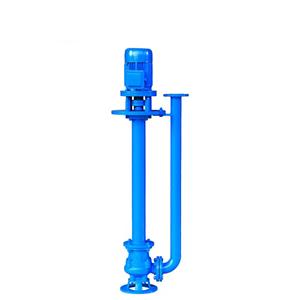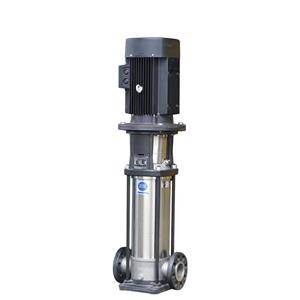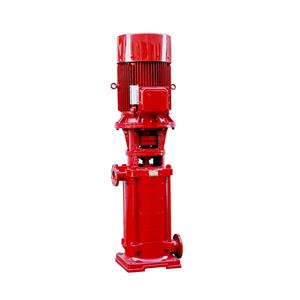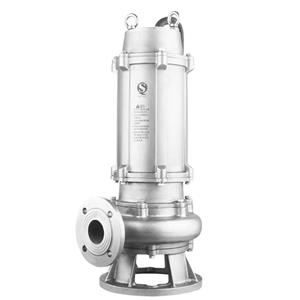-
In the field of fluid transportation, pumps play a crucial role. Among various types of pumps, submersible pumps and vertical long - shaft pumps are widely used. Although both are designed for liquid transfer, they have distinct characteristics in terms of structure, working principle, performance, and application scenarios.
-
The urgency of pump energy - saving reformation is clear. It is not only an important measure for environmental protection and energy conservation but also a necessary step for the sustainable development of industries. We should take immediate actions to promote the energy - saving reformation of pumps, and jointly create a more energy - efficient and sustainable future.
-
when it comes to handling 2 - 3 cm banana stem fragments, diaphragm pumps, progressive cavity pumps, and screw pumps are all viable options, each with its own advantages and disadvantages. Diaphragm pumps are good for their anti - clogging ability and ease of maintenance, progressive cavity pumps offer a smooth flow and can handle a wide range of conditions, and screw pumps are efficient and can handle high flow rates. The choice ultimately depends on factors such as the specific processing requirements, budget, and the importance of factors like flow rate, maintenance, and cost.
-
Self-priming pumps are widely used in various industries and applications. However, when it comes to pumping fluids that contain particulate matter and impurities, special attention must be paid to ensure the pump's efficient operation and longevity. Here are some crucial considerations.
-
Choosing between a single-stage and a multistage pump depends largely on the specific requirements of the application. Single-stage pumps excel in low-pressure, high-flow situations where simplicity and cost-effectiveness are key. In contrast, multistage pumps are ideal for high-pressure applications where efficiency, reliability, and versatility are critical. By understanding the advantages, disadvantages, and practical applications of each type, engineers and system designers can select the appropriate pump to meet the needs of their projects, ensuring optimal performance and cost-efficiency over the long term. Whether it’s handling large volumes of water for irrigation or supplying pressurized water for a high-rise building, both single-stage and multistage pumps offer solutions that meet different operational demands.
-
0701-2025
Differences Between Stainless Steel Magnetic Drive Pumps and Fluoroplastic Magnetic Drive Pumps
In conclusion, the choice between stainless steel magnetic drive pumps and fluoroplastic magnetic drive pumps depends largely on the specific requirements of the application. Stainless steel pumps are ideal for general-purpose applications where strength and durability are important but chemical resistance is not a major concern. On the other hand, fluoroplastic pumps are perfect for handling highly corrosive chemicals and fluids, though they come with a higher initial cost and lower mechanical durability. By understanding the strengths and limitations of each material, engineers can select the most suitable magnetic drive pump for their needs, ensuring both efficiency and safety in fluid transfer operations.
-
Troubleshooting single-stage centrifugal pumps involves identifying the root cause of the issue and implementing targeted solutions. Regular maintenance, proper pump operation, and timely repairs can prevent many common failures and extend the pump’s service life. By understanding the causes and remedies for typical problems such as insufficient flow, cavitation, overheating, and leakage, operators can ensure reliable and efficient pump performance in their applications.
-
Circulation pumps and booster pumps serve distinct roles in fluid handling systems. Circulation pumps excel in maintaining consistent fluid movement within closed loops, while booster pumps address pressure deficiencies in various systems. By understanding their differences in functionality, design, and applications, you can make an informed decision to meet your system’s specific needs.
-
Pumps for high-viscosity fluids in the chemical industry need to be specifically designed to handle the challenges posed by thick liquids, such as increased resistance to flow, high energy requirements, and wear. Positive displacement pumps, including gear pumps, progressive cavity pumps, diaphragm pumps, and peristaltic pumps, are often the best choices for handling these fluids due to their ability to maintain consistent flow and generate high pressure. When selecting a pump, it is essential to consider the fluid’s viscosity, temperature, presence of solids, and the required flow rate. By choosing the right pump and maintaining it properly, industries can ensure the reliable and efficient transport of high-viscosity fluids, reducing operational downtime and prolonging the lifespan of their equipment.
-
Selecting the right pump for high-viscosity liquids is a critical decision that impacts the efficiency, reliability, and cost-effectiveness of your pumping system. Positive displacement pumps, such as gear pumps, progressive cavity pumps, and diaphragm pumps, are often the best choice for handling thick, viscous fluids. These pumps offer the ability to handle higher pressures and thicker liquids, ensuring smooth flow and minimal risk of clogging. It’s important to consider the fluid’s viscosity, temperature, shear sensitivity, and the presence of solids when making a pump selection. Regular maintenance and proper installation will also help maximize pump performance and longevity, reducing operational costs and downtime. By carefully selecting and maintaining the right pump, industries can ensure efficient pumping of high-viscosity liquids, improving process efficiency and reducing wear and tear on equipment.




